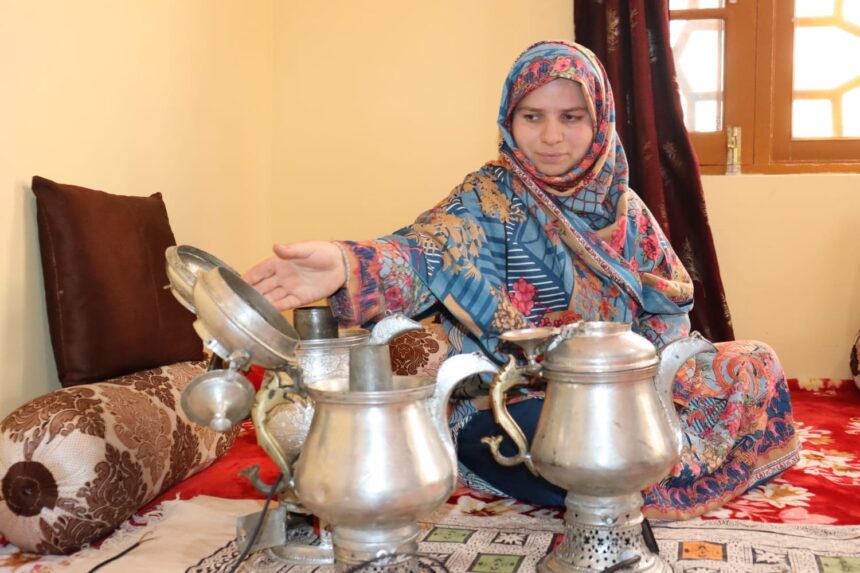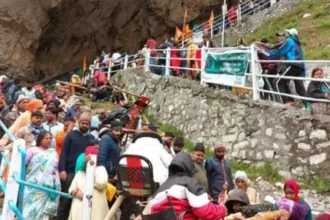In the picturesque region of Kashmir, where the mountains cradle a rich cultural heritage, a remarkable woman from Qazigund is breathing new life into the traditional Kashmiri Samovar. This iconic vessel, once a staple in every household, is being reimagined for modern use with the introduction of gas and electric versions, ensuring that the essence of this cherished artifact endures in contemporary society.
The Cultural Significance of the Samovar
The Samovar has long been more than just a device for boiling water; it is a symbol of Kashmiri hospitality and warmth. Traditionally crafted from metal and adorned with intricate designs, the Samovar was an essential part of daily life, especially during gatherings where families and friends would come together to enjoy Nun Chai, the beloved salted tea that embodies the spirit of Kashmiri culture.
As the poet Agha Shahid Ali beautifully captures in his verses:
“In the valley of my heart, tea brews in a Samovar,
The warmth of its embrace, a reminder of who we are.”
This sentiment reflects how the Samovar has been woven into the fabric of Kashmiri life, serving not only as a vessel but as a means to foster connections among people.
A Modern Twist on Tradition
Recognizing the decline in the use of traditional Samovars due to modern conveniences, Shazia Jan, a local innovator from Qazigund, has taken it upon herself to upgrade this cultural artifact. By introducing gas and electric versions of the Samovar, she aims to make it more accessible and appealing to younger generations while preserving its cultural significance.
Shazia’s efforts are commendable as they bridge the gap between tradition and modernity. She understands that while technology can enhance convenience, it should not overshadow the rich heritage associated with these vessels. Her innovative designs maintain the aesthetic beauty of the traditional Samovar while incorporating functionality that aligns with contemporary lifestyles.
The Taste of Kashmiri Hospitality
The essence of Kashmiri hospitality is encapsulated in the experience of sharing tea brewed in a Samovar. The unique flavor of Nun Chai, prepared in this traditional vessel, is unmatched. The process itself becomes an art form—water heated slowly in the Samovar allows for a depth of flavor that quick methods cannot replicate. As local poet Zareef Ahmad Zareef eloquently expresses:
“In every sip of tea from a Samovar’s heart,
Lies a story of love, where friendships start.”
This poetic imagery highlights how each cup served from a Samovar carries with it not just warmth but also tales of connection and community.
Preserving Heritage Through Innovation
Shazia Jan’s initiative is not just about creating new products; it is about preserving an important aspect of Kashmiri identity. By encouraging younger generations to engage with their heritage through these modernized Samovars, she hopes to rekindle interest in traditional practices that have been overshadowed by rapid modernization.
Her work serves as an inspiration for others in the community to explore ways to innovate while honoring their cultural roots. As Shazia herself states, “It is essential for our youth to appreciate and embrace our traditions. The Samovar is not just an object; it represents our history and values.”
Reviving Culture
The transformation of the Kashmiri Samovar by Shazia Jan exemplifies how innovation can coexist with tradition. As she introduces gas and electric versions of this beloved vessel, she ensures that its legacy continues to thrive in modern times. The Samovar remains a potent symbol of Kashmiri hospitality—a reminder that even as we embrace change, we must cherish and preserve the rich heritage that defines us.







